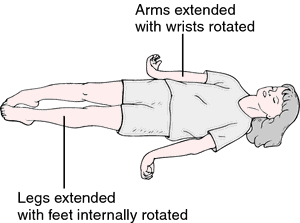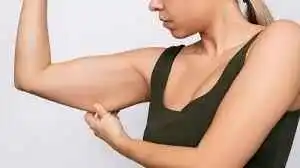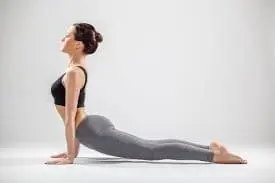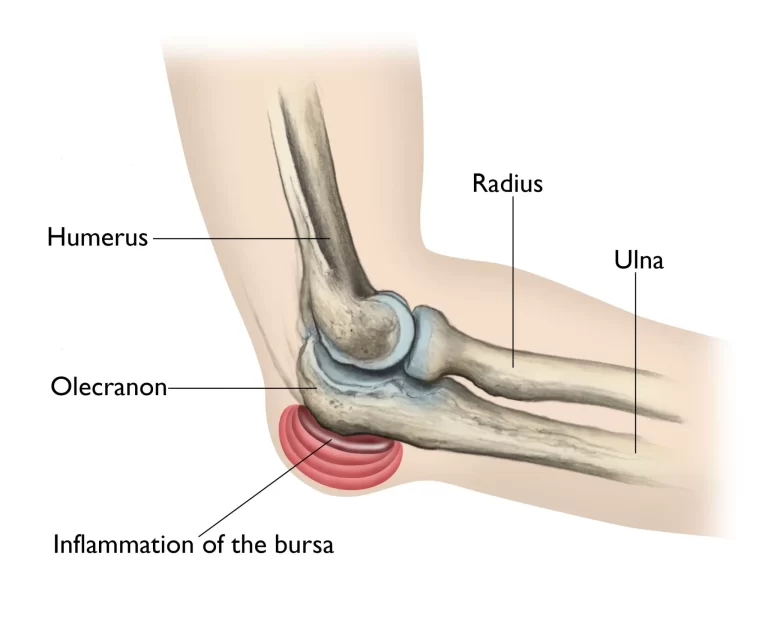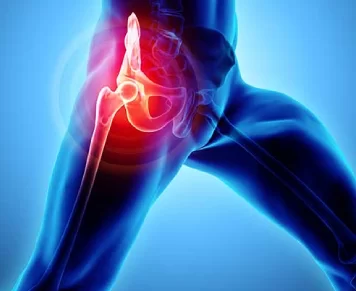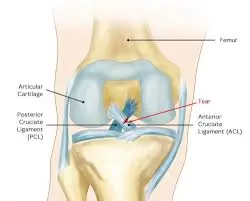Abnormal Posturing
Introduction Of Abnormal Posturing:
Definition of Abnormal Posturing
Abnormal posturing refers to involuntary and rigid body movements or positions that are often indicative of severe brain injury or neurological disorders. These postures result from disrupted communication between the brain and the muscles, typically due to damage in the central nervous system. There are mainly two types: decerebrate and decorticate.
Decerebrate posturing involves extension and outward rotation of the arms and legs, often indicating damage to the brainstem. Decorticate posturing, on the other hand, is characterized by flexion of the arms, clenched fists, and extended legs, suggesting damage to areas above the brainstem.
Rigid body motions and regularly abnormal body postures are referred to as abnormal posturing. The muscles on the opposing side of the joint often provide some resistance to a muscular contraction. However, when a muscle contracts in appropriate posture, the muscular groups are unable to provide resistance.
This results in rounded or stiff feet, as well as abnormal head or back movement. This symptom is not the same as hunching over or adopting a bad posture. Instead, it refers to a propensity to maintain a specific physical posture or move one or more body parts abnormally. Serious brain or spinal cord injuries are the cause of many abnormal posturing habits.
Involuntary muscular contractions that result in abnormal body positions, primarily in flexion and extension, are known as abnormal posturing and are typically linked to serious disorders affecting the brain and spinal cord. In this instance, one group of muscles’ tone increased while the tone of the other group of muscles dropped. Posturing like this can also occur in the absence of a trigger.
When measuring the severity of a condition using the Glasgow Coma Scale (for adults) and the Pediatric Glasgow Coma Scale (for newborns), doctors can use abnormal posturing as a useful measure of how much the upper motor neuron-associated disease has been damaged. a measure of how much the upper motor neuron-associated disease has been damaged.
When your spine is positioned abnormally, with the spinal curvature highlighted and the joints as a result, this is known as poor posture.
The vertebrae and muscles are under pressure. Pressure develops on other bodily components as a result of this persistently incorrect position. A number of brain and spinal cord disorders may be linked to abnormal posturing.
Adult bad posture is largely caused by abnormal spinal curvature, which is an irregularity in the position, development, or curvature of one or more vertebrae. More than 60% of older adults have adult spinal deformity (ASD), which often occurs in conjunction with a number of other disorders including disk degeneration, vertebral fractures, and spondylotic alterations.
Causes of Abnormal posturing:
The top few most frequent reasons for abnormal posing are as follows:
- Brain hemorrhage due to any reason
- Brain tumor
- Brain Abscess
- Hemorrhagic Stroke
- The primary causes of brain damage are pharmacological side effects, poisoning, and bacterial and fungal infections.
- Head-brain trauma
- liver failure-related brain damage
- Elevated cerebral pressure resulting from any cause, including hydrocephalus
- Low glucose levels (hypoglycemia)
- Brain tumor
- Illnesses like meningitis
- Intracerebral bleeding.
- Reye syndrome: issues associated with brain damage and liver function that primarily affect youngsters
- Oxygen-deficient brain damage
- Malaria in the brain
- Poisoned with lead
Conditions include traumatic brain injury, stroke, intracranial bleeding, brain tumors, brain abscesses, and encephalopathy that raise intracranial pressure and can result in abnormal posturing.
The most common posturings linked to brain herniation are decorticated and decerebrate. A potentially fatal disorder known as brain herniation occurs when sections of the brain press against hard structures inside the skull. Brain herniation is primarily characterized by decorticate posturing, which, if left untreated, eventually turns into decerebrate posturing. When serious brain injury occurs, one side of the body exhibits decerebrate posture, while the opposing side exhibits decorticate posturing.
Additionally, individuals with widespread cerebral hypoxia, brain abscesses, and Creutzfeldt-Jakob disease have also been shown to exhibit it.
In instances of judicial hanging, posturing has also been seen; in these circumstances, the impact may be concealed by strapping the arms and legs.
Area of Pain in Abnormal Posturing:
- Although low back pain is the most common complaint, studies indicate that postural dysfunction is also causing an increase in neck, shoulder, and arm pain. The emphasis on fitness and running has also led to an increase in the prevalence of foot and knee issues.
- aches and pains in the body, such as pain in the arms, neck, shoulders, or lower back.Pain in the lower limbs, such as the leg, hip, knee, or ankle
- Fatigue of the muscles
- Stress accumulation in the upper back, neck, and shoulders is what causes headaches.
Types of Abnormal Posturing
Three primary categories of abnormal posturing are present:
Decorticate posturing, displaying a decorticate posture by bending the arms over the chest
Decerebrate Posturing: This posture involves extending the arms to the sides.
Opisthotonus: a backward-curving head and back.
Decorticate posturing:

A patient with a decorticate posture has an atypical stance, with their legs extended straight forward, their wrists contracted, their fingers clenched, and their arms draped over their chest. The and rest on the chest, the arms bowed inward toward the torso. Such a posture is suggestive of serious brain damage. The wrists and fingers are bent.
Individuals with this illness should need immediate medical attention. It might affect the body’s left or right side.
Informally, decorticate response, decorticate stiffness, flexor posturing, and decorticate posture are also referred to as “mummy babies.”
It is a sign of significant damage to the area of the midbrain, which is located between the brain and the spinal cord. Motor movement is governed by the midbrain. Decerebrate posture is a serious disorder, even if its symptoms are not as severe as those of decerebrate posture.
A neuro-trauma that exhibits decorticate posture in reaction to pain receives a score of three on the Glasgow Coma Scale’s motor segment for the bending of upper body muscles.
This position is divided into two parts:
The cervical spinal cord’s motor neurons that supply the upper limb’s flexor muscles are stimulated by the rubrospinal tract. The upper limb’s extension posing is caused by the medial and lateral vestibulospinal and pontine reticulospinal tracts, whereas the flexion kind of posturing is produced by the rubrospinal and medullary reticulospinal tracts.
The second feature of this position is the disturbance of the lateral corticospinal tract, which triggers the motor neurons in the lower spinal cord responsible for supplying the lower limb’s flexor muscles. The medullary reticulospinal tract is activated in response to the simultaneous activation of the pontine reticulospinal and medial and lateral vestibulospinal tracts, which in turn considerably improve the stimulation of the lower limb’s extension action.
Posture in the upper limb (flexion) and lower limb (extensor) is mostly caused by injuries in these two pathways above the red nucleus.
This abnormal orientation suggests a high risk of serious injury to the thalamus, internal capsule, and cerebral hemispheres. A midbrain damage is a further option. A lesion deeper in the brainstem is suggested by the involvement of the red nucleus, and this position is frequently predictive of more severe damage at the rubrospinal tract.
Decerebrate posturing

A type of abnormal posturing known as decerebrate posturing involves the body being in an extended, stiff stance with the arms and legs extended straight out, the toes pointing downward, and the head and neck arched backward. The muscles of the body are rigid and strained. Serious brain damage is usually indicated by this type of odd attitude.
Extensor posturing, decerebrate posture, and decerebrate reaction are other names for decerebrate posturing.
The involuntary extension of the upper limb in response to an outside stimulus in this posture. The legs are stretched in a decerebrate stiffness, the head is hyperextended back, and the arms are similarly extended by the sides.
Damage to the cerebral cortex is a result of decerebrate posture, although the specific location of the lesion will determine the clinical symptoms. Decerebrate stiffness can be caused by trauma, vascular lesions, tumors, and convulsions. In decerebrate stiffness, spontaneous nystagmus or ocular deviation is also observed. This kind of stiff posture typically indicates significant brain injury.
Decerebrate rigidity is a rare medical disorder in which the upper extremities are held outwardly and internally rotated. It is a sort of posture that is only found in individuals who suffer brainstem injury. Additionally, the legs are pronated and stretched. The patient’s teeth are clenched and they are stiff. In cases of severe midbrain injuries, this type of stiff posture is most common.
It is also linked to decorticate posture, a different kind of abnormal posturing. A person who has a decorticate posture on one side of the body while on the other side decerebrate stiff posture in rare extreme situations.
Extreme instances of decerebrate stiff posture, characterized by extreme muscular rigidity in the neck and back, may result in opthotonosis. The decerebrate rigidity posture was originally described in 1898 by Nobel winner Charles Sherrington, who had removed the brainstems of live cats and monkeys.
Decerebrate stiff postures, in which the trunk and limbs exhibit characterized extended body motions, are classified as pathological inflexible reactions to typically uncomfortable external or internal stimuli.
Opisthotonos posturing:
The abnormal posture known as “opisthotonos” occurs when the muscles in your neck, back, and legs clench and go into acute spasms. Your head points toward your feet as your body bends backward into a stiff arch as a result of these intense contractions.
Opisthotonosis is a sign of several major health issues rather than a distinct illness. It is a sign of serious neurological problems that are life-threatening and need immediate medical attention, but it is a rather uncommon disease.
Opisthotonos, a term for a severe muscular spasm or spasticity in which a person’s head, neck, and body arch, is taken from Greek work where opistho means behind and tonos indicates tension.
The axial muscles’ stiffness with respect to the spinal column is the source of this hyperextended posture, which is an extrapyramidal consequence. It is most commonly observed in cases of tetanus, severe cerebral palsy, and traumatic brain injury, all of which are linked to severe muscle spasms.
Treatment of Abnormal posturing:
Emergency Care in the ICU (Mostly Neo-ICU).
An emergency craniotomy for the excision of an extra-axial hematoma may improve survival.
Remove the cause (treatment is based on diagnosis and symptoms), such as by treating infections and, if necessary, resolving metabolic abnormalities. Treatment for the symptoms is initiated with some help.
Physical Therapy treatment in Abnormal posturing:
The symptoms of abnormal posturing are treated and improved using physical therapy treatments and exercises. The most popular form of treatment is postural rehabilitation, which strengthens the muscles supporting the back, limbs, and spine posture through exercises and physical therapy treatments.
Making corrections Exercises for posture are used to strengthen the muscles that support the spine, as well as to improve posture in the limbs and spine. Exercises that focus on strengthening the muscles supporting the spine, extending the tense muscles caused by the head and shoulder positions, and enhancing the posture of the limb are frequently used in its treatment.
The most often used treatments are listed below; however, they might differ depending on the condition’s symptoms, underlying causes, and diagnosis.
- Pain-free Passive Movement
- Therapy for the Chest
- Minimize stiffness and spasticity
- Frequent stretches
- Program for Rehabilitation
- Posture Correcting
- Consistent Ankle Movement
- If the patient is in a coma, shift their posture often (mostly from supine to side laying position to minimize bed soreness)
- Exercise for range of motion.
- Exercises including passive relaxation and range of motion (ROM) can help prevent joint stiffness and abnormalities. Every day, the trunk and all four limbs must be passively moved.
Prognosis:
The prognosis is influenced by the etiology, diagnosis, severity of symptoms, age, and other pertinent factors. This odd posture might indicate severe impairment of the neurological system or brain, which can sometimes result in irreparable brain damage and produce the following symptoms:
- Seizures.
- Paralysis.
- Incapable of speaking.
- Coma.
People who exhibit decorticate or decerebrate stiffness are often in a coma with unhelpful prognoses that include a risk of respiratory failure and cardiac arrhythmia or arrest.
Early admission within hours of damage, extradural hematoma, and younger patient age are factors that significantly impact survival in TBI with decerebrate rigid posture. Older age and acute subdural hematoma are the main risk factors.
FAQs
Why does poor posture matter?
Your body can hold your weight without experiencing strain when your spine is properly aligned, allowing for easy movement. Your tendons, muscles, and ligaments may be overworked by poor posture, which can cause neck and back pain.
Does poor posture have a cure?
In order to facilitate the therapy of the posture condition, the physical therapist stretches and exercises the patient’s body in accordance with its structure throughout these sessions. The usage of a posture correction device may be advised in specific circumstances by the physician and physical therapist.
Does poor posture cause you to age?
Additionally, it may cause problems for your skin, including early wrinkling and sagging. You might accelerate the aging process and appear older than you actually are by hunching over or craning your neck forward all the time.
What posture errors are visible?
8 Typical Indices of Poor Posture
broad shoulders. Because they show that the upper back is curved and the shoulders are bent forward, rounded shoulders are an indication of poor posture. …
Anterior pelvic tilt; hunchback; slouching; forward head position;…
persistent headaches.
weariness in the muscles.
Neck and back aches.
Can incorrect posture prevent a person from growing?
Your real height may be hampered over time by your bad posture, which can cause your body to sag and stoop. Because our backs naturally curve, frequent slouching, and drooping can cause the curves to change to fit your preferred posture.
Why does bad posture occur?
Tension or weakness in the muscles: If you have some muscles that are stronger or weaker than others, it might make your posture worse. Back pain may result from your decision to rely on your back muscles for stability if your abdominal muscles are weak from insufficient training.
How is improper posture corrected?
Make a point of building up your core (torso and pelvic) muscles. To help with posture, spend ten minutes a day performing easy stretching activities. Take a stance with pride. This entails bringing your shoulders down to their natural resting posture, straightening your back, and gradually contracting your abdominal muscles.
Is atypical posture dangerous?
While abnormal posture alone may not always be a marker of disease, it can help identify the location and intensity of a disease process when combined with additional symptoms.
Which three postural anomalies are there?
The three most common postural issues are forward head posture (FHP), kyphosis, and lumbar lordosis. These anomalies may result in a variety of musculoskeletal issues, including headaches, neck and back pain, and in extreme situations, breathing difficulties.
What consequences arise from improper posture?
A few simple lifestyle changes can help with your posture and spinal health.
What do you call an atypical posture?
Decorticate and decerebrate posturing are typically the outcomes of abnormal posturing responses to uncomfortable stimuli. They entail conventional trunk and extremity motions. It has to be identified and treated very early to prevent the significant morbidity and death that are linked to these disorders.
Which kinds of abnormal postures are there?
There are three types of abnormal posture that are recognized: decerebrate posturing, which involves stretching the arms to the sides, decorticate posturing, which involves flexing the arms over the chest, and opisthotonus, which involves arching the head and back backward.
References
- Dhameliya, N. (2022, January 23). Abnormal posturing: Cause, Types, Prognosis, Treatment Samarpan Physio. Samarpan Physiotherapy Clinic. https://samarpanphysioclinic.com/abnormal-posturing-causetypesprognosistreatment/
- Physiotherapist, N. P. (2021, November 7). Abnormal Posture : Type, Cause, Symptoms, Exercise. Mobile Physiotherapy Clinic. https://mobilephysiotherapyclinic.in/abnormal-posture-physiotherapy-exercise/

